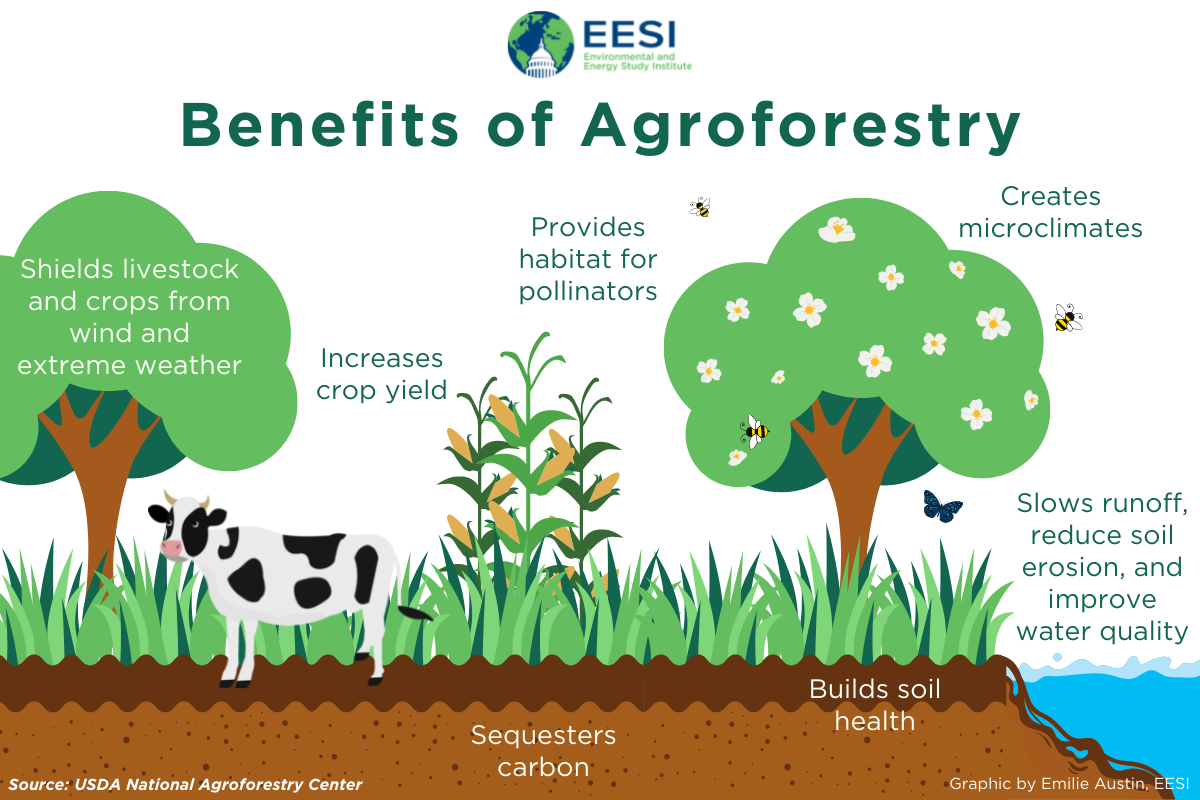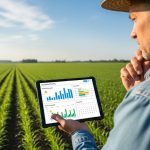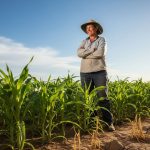Imagine a world where your actions could help heal the planet. Agroforestry might just be your secret weapon.
Have you ever wondered how you can make a real difference in the fight against climate change? Agroforestry combines agriculture and forestry to create a more sustainable and resilient environment. It’s not just a farming technique; it’s a powerful tool to combat the climate crisis.
By the end of this article, you’ll discover how this innovative approach can positively impact not only your surroundings but also the planet as a whole. Ready to learn how you can be part of the solution? Let’s dive in and explore the incredible role agroforestry plays in our fight against climate change.

Agroforestry Practices
Agroforestry combines trees with crops or livestock, helping absorb carbon dioxide. This practice reduces greenhouse gas emissions. It enhances biodiversity and improves soil health, contributing to climate resilience.
Agroforestry practices are emerging as a powerful tool in the fight against climate change. By blending agriculture with forestry, these practices enhance biodiversity, improve soil health, and increase carbon sequestration. You might be wondering how exactly these practices work and why they are crucial for our environment.
What Exactly Are Agroforestry Practices?
Agroforestry involves the intentional integration of trees and shrubs into farming landscapes. Unlike traditional farming, which often strips the land bare, agroforestry enriches it. Imagine walking through a field where crops grow alongside towering trees. This mix creates a balanced ecosystem, offering habitat to various species while protecting the soil from erosion.
Types Of Agroforestry Practices
There are several ways to practice agroforestry. Silvopasture combines trees with livestock grazing. This setup not only provides shade for animals but also enhances soil fertility through natural manure.
Alley cropping involves planting rows of trees between rows of crops. This arrangement maximizes land use efficiency and can significantly boost crop yields.
Forest farming allows the cultivation of high-value crops under the canopy of existing forests. Think of mushrooms or medicinal herbs growing in harmony with towering oaks.
Benefits You Might Not Expect
Agroforestry practices contribute to climate change mitigation by capturing carbon dioxide. Trees absorb CO2, reducing greenhouse gases in the atmosphere. This process helps regulate the climate while offering farmers additional revenue streams through timber or fruit production.
Have you considered how agroforestry might impact local wildlife? Trees provide shelter and food for birds and insects, fostering biodiversity. This increase in biodiversity can lead to natural pest control, reducing the need for chemical pesticides.
Getting Started With Agroforestry
If you’re interested in adopting agroforestry, start small. Begin by planting a few trees in your garden or farm. Observe how they interact with your crops. Do they enhance growth or attract beneficial insects?
Consider the types of trees that thrive in your local climate. Native species are often the best choice as they are adapted to the local environment and require less maintenance.
Challenges And Solutions
It’s not all smooth sailing. Agroforestry can require more initial planning and effort. You might face challenges such as coordinating tree planting with crop cycles. But don’t be discouraged.
Consulting with local experts or joining agroforestry networks can provide valuable insights. Connect with others who have successfully implemented these practices. They can offer advice on overcoming hurdles and maximizing benefits.
Agroforestry practices are not just a trend; they are a practical solution to climate challenges. As you explore these options, consider how they could transform your landscape and contribute to a healthier planet.

Impact On Carbon Sequestration
Agroforestry plays a crucial role in fighting climate change. One key benefit is carbon sequestration. Trees capture carbon dioxide from the air. They store it in their trunks, branches, and roots. This process helps reduce greenhouse gases.
Impact On Soil Carbon Storage
Trees and plants improve soil health. Their roots add organic matter to the soil. This increases soil’s ability to store carbon. Healthy soil is a carbon sink. It traps carbon for long periods.
Role Of Biodiversity In Carbon Sequestration
Agroforestry supports diverse plant species. Each species stores carbon differently. Together, they enhance carbon sequestration. Biodiversity boosts ecosystem health. Healthy ecosystems are better at capturing carbon.
Long-term Carbon Storage Potential
Trees grow for many years. As they grow, they store more carbon. Larger trees capture more carbon than smaller ones. Agroforestry ensures long-term carbon storage. This helps slow climate change over time.
Reduction Of Carbon Footprint
Agroforestry reduces reliance on fossil fuels. It promotes sustainable practices. Less fossil fuel use means lower carbon emissions. This contributes to a smaller carbon footprint.
Enhancing Soil Fertility And Carbon Capture
Agroforestry improves soil fertility. Fertile soil captures carbon efficiently. It supports plant growth, enhancing carbon capture. Fertile soil is essential for a robust carbon sequestration process.
Biodiversity And Ecosystem Services
Agroforestry helps fight climate change by increasing biodiversity and providing ecosystem services. Trees in farms improve soil health and store carbon. This practice supports wildlife and protects water resources, creating a more sustainable environment.
Biodiversity and ecosystem services play a crucial role in the health of our planet. Agroforestry, which combines agriculture and forestry, stands out as a powerful tool in preserving biodiversity and enhancing ecosystem services. By integrating trees and shrubs into farming systems, agroforestry creates a more diverse and resilient environment.
Enhancing Habitat Diversity
Agroforestry introduces a variety of habitats within agricultural landscapes. This diversity supports different species, from insects to birds and mammals. Imagine walking through a farm where fruit trees, shrubs, and crops coexist, each playing its part in the ecosystem.
These habitats not only provide shelter and food but also aid in the conservation of endangered species. By choosing to support or implement agroforestry practices, you contribute to a more vibrant and balanced ecosystem. How would it feel to know your food choices positively impact wildlife?
Boosting Pollination And Pest Control
The presence of diverse plant species attracts pollinators like bees and butterflies. These creatures are essential for the pollination of many crops, ensuring higher yields and food security. On a personal note, witnessing a garden buzzing with pollinators is a reminder of nature’s intricate balance.
Agroforestry also encourages natural pest control. Birds and beneficial insects thrive in these systems, reducing the need for chemical pesticides. This not only protects crops but also safeguards your health and the environment from harmful chemicals.
Improving Soil And Water Quality
Trees and shrubs in agroforestry systems help prevent soil erosion. Their roots hold the soil together, reducing the loss of fertile topsoil. Healthy soil supports robust plant growth, which is fundamental for sustainable agriculture.
Moreover, these plants play a role in maintaining water quality. They filter pollutants and regulate water flow, ensuring that water sources remain clean and abundant. Consider the long-term benefits of cleaner water and richer soil for future generations. How might this shape the world you leave behind?
Carbon Sequestration And Climate Regulation
Agroforestry systems are effective at capturing carbon dioxide from the atmosphere. Trees and plants absorb CO2, storing carbon and releasing oxygen. This process helps mitigate climate change by reducing greenhouse gases.
By participating in or supporting agroforestry projects, you help fight climate change. Imagine the impact if more farms adopted these practices—could this be a key piece in our climate solution puzzle?
Agroforestry offers practical, actionable steps towards a healthier planet. By understanding and supporting these systems, you actively contribute to a sustainable future.

Conclusion
Agroforestry offers a powerful tool against climate change. It blends trees with crops, enhancing biodiversity. This practice enriches soil health and reduces carbon emissions. Farmers gain better yields and sustainable land use. Communities benefit from improved air and water quality.
By adopting agroforestry, we take a step towards a healthier planet. It supports both the environment and local economies. Small changes can lead to big impacts. Let’s embrace agroforestry for a greener future. Working together, we can make a real difference.



